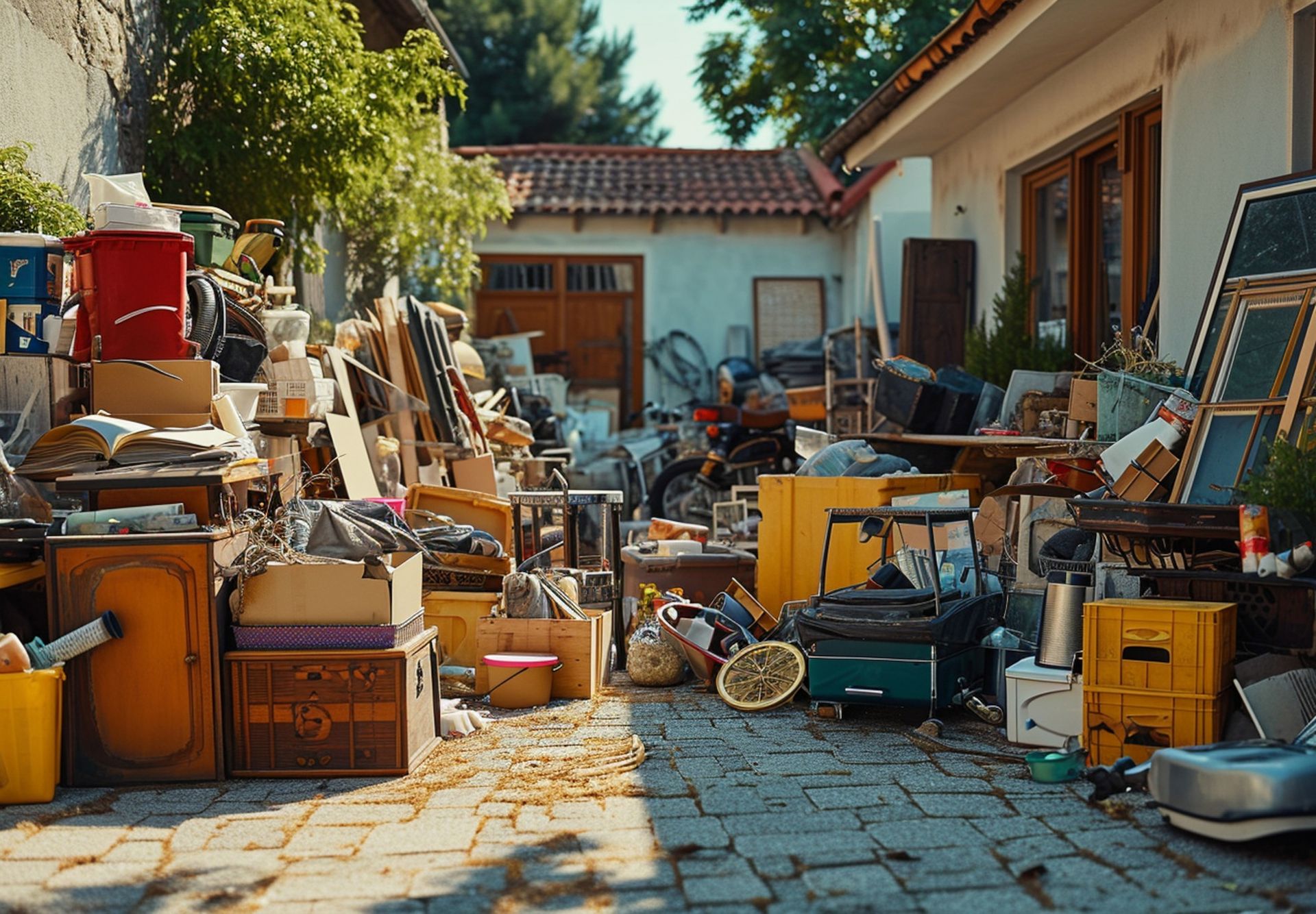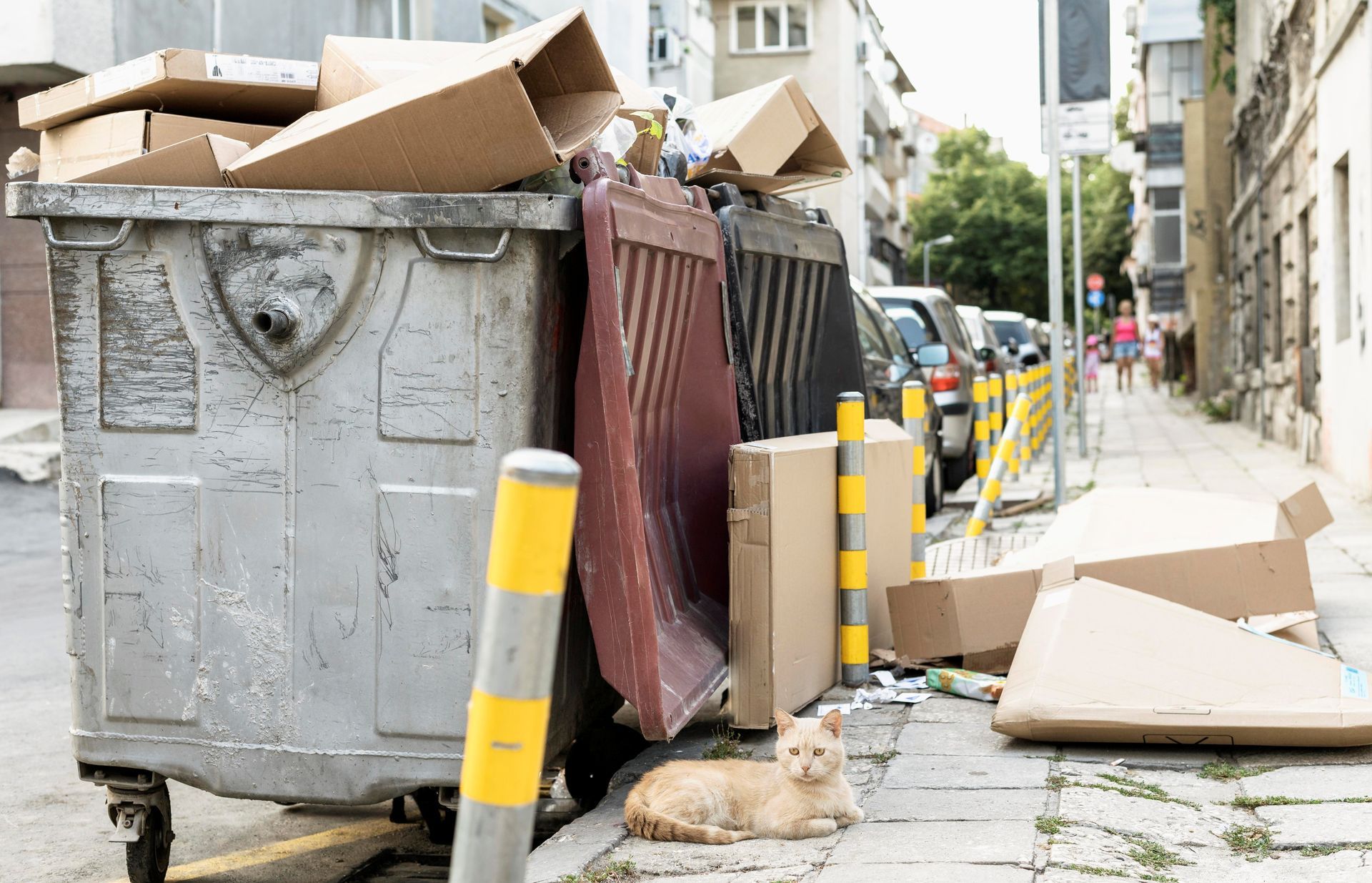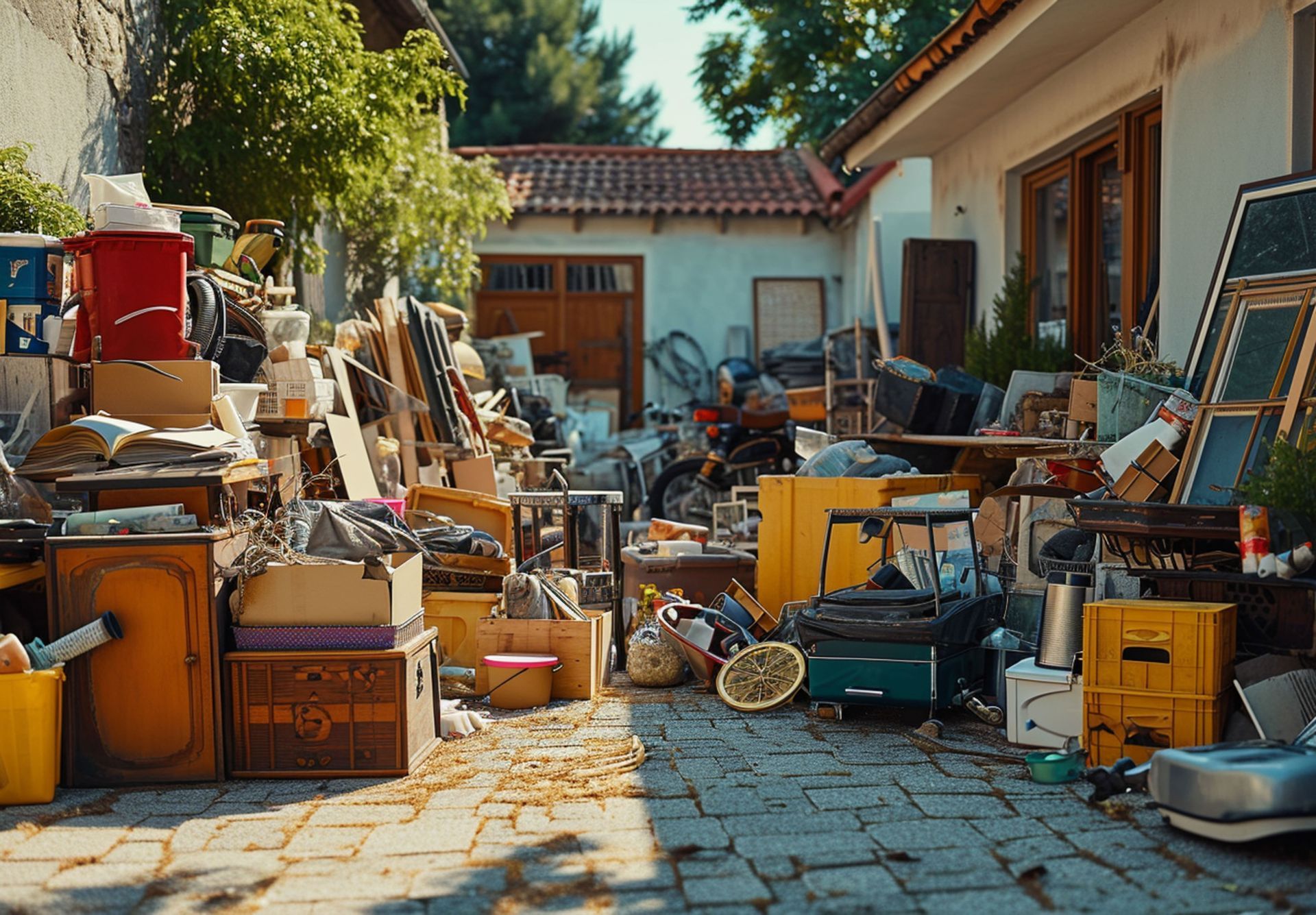10 Easy Steps to Collect Yard Waste and Organic Debris
Introduction
A well-maintained yard goes beyond aesthetic appeal - it's essential for the health of your outdoor space and the environment. Yard waste collection plays a crucial role in maintaining the beauty and functionality of your property while preventing potential lawn damage.
Proper yard waste management offers several key benefits:
• Prevents lawn suffocation: Removing excess organic debris allows your grass to breathe and grow properly
• Reduces pest problems: Regular cleanup eliminates hiding spots for unwanted critters
• Creates nutrient opportunities: Collected yard waste can be transformed into valuable compost
• Maintains property value: A clean, debris-free yard enhances your home's curb appeal
This guide breaks down yard waste collection into 10 manageable steps, from identifying different types of organic debris to implementing sustainable disposal practices. You'll learn practical techniques for handling everything from small grass clippings to large tree branches, plus discover environmentally friendly ways to repurpose your yard waste.
Whether you're a new homeowner or a seasoned gardener, these steps will help you develop an efficient system for managing yard waste. The result? A healthier lawn, a cleaner environment, and a more beautiful outdoor space that you can enjoy year-round.
Step 1: Identify Types of Yard Waste
Your yard generates different types of organic debris throughout the seasons. Learning to identify these materials helps you handle them appropriately and choose the right collection methods.
Here's what you'll typically find in your yard:
• Grass Clippings: Fresh-cut grass makes up a significant portion of yard waste during growing seasons. These clippings are nitrogen-rich and decompose quickly.
• Fallen Leaves: Deciduous trees shed their leaves seasonally, creating substantial organic matter. The volume can vary from light scattered leaves to thick blankets covering your lawn.
• Brush and Small Plants: This category includes dead annual plants, pruned shrub trimmings, pulled weeds, and garden plant debris.
• Woody Materials: These tougher materials require special handling such as tree branches, fallen twigs, pruned limbs, and tree bark.
• Seasonal Debris: Pine needles, fruit droppings, flower heads, and seed pods are also part of the yard waste.
Each type of yard waste breaks down at different rates and requires specific handling methods. Grass clippings decompose rapidly, while woody materials take longer to break down. Understanding these characteristics helps you make informed decisions about collection and disposal methods.
Step 2: Gather Necessary Tools and Supplies
The right tools make yard waste collection efficient and hassle-free. Here's your essential toolkit for effective yard cleanup:
Basic Collection Tools:
• Heavy-duty rake for leaves and debris
• Sturdy garden gloves to protect your hands
• Pruning shears for small branches
• Loppers for thicker branches
• Wheelbarrow or garden cart for transportation
Containment Materials:
• Compostable paper bags - ideal for leaves and grass
• Biodegradable plastic bags for wet waste
• Strong twine or rope for bundling branches
• Reusable yard waste containers with secure lids
Safety Equipment:
• Safety goggles to protect your eyes
• Steel-toed boots for heavy branch work
• Long-sleeved shirts and pants
• Face mask for dusty conditions
Additional Helpful Items:
• Leaf scoops or collection tarps
• Manual leaf vacuum for small areas
• Yard waste chute for easy bag filling
• Bag holder stands to keep bags upright
Store these tools in a dry, accessible location. Quality tools last longer and make the job easier - invest in durable items that can withstand regular use. Clean your tools after each use to prevent rust and maintain their effectiveness.
Step 3: Plan Your Collection Strategy
A well-planned collection strategy saves time and energy while ensuring thorough yard cleanup. Start by dividing your yard into manageable sections:
• Front yard
• Back yard
• Side areas
• Garden beds
• Around trees and shrubs
Assess Your Yard's Specific Needs:
• Measure your yard's square footage
• Note problem areas with heavy debris
• Identify obstacles like furniture or playground equipment
• Consider seasonal factors affecting cleanup
Create a Collection Timeline:
• Morning Hours: Start with damp areas where debris is heavier
• Mid-Day: Focus on dry sections for easier collection
• Late Afternoon: Handle remaining lightweight materials
Map Your Collection Route:
Start from the highest point of your yard and work downward - this prevents debris from rolling into cleaned areas. Work in a systematic pattern:
• Begin at property boundaries
• Move inward in parallel lines
• Create collection stations every 20 feet
• Position debris piles near disposal access points
Consider wind direction during collection - working against the wind prevents debris from blowing into cleaned areas. For larger yards, break the task into multiple sessions spread across several days to maintain efficiency and prevent fatigue.
Step 4: Collect Small Debris First
Small yard debris requires specific collection techniques to ensure efficient cleanup. Start with these proven methods for gathering grass clippings, leaf piles, and twigs:
Rake in Sections
• Divide your yard into manageable zones
• Work in a systematic pattern - left to right or top to bottom
• Create small piles at the center of each zone
Use the Right Tools
• Leaf rake for grass clippings and leaves
• Hard rake for twigs and small branches
• Leaf scoops or collection tarps for easy gathering
Collection Tips
• Pick dry days for easier collection
• Rake with the wind direction
• Place a tarp under your work area to catch falling debris
• Use mulching mowers to shred leaves into smaller pieces
Smart Bagging Strategies
• Stand bags upright using a bag holder
• Fill bags only 3/4 full to prevent tearing
• Press down contents periodically to maximize space
• Use compostable bags for eco-friendly disposal
A methodical approach to collecting small debris creates a foundation for tackling larger yard waste. Your cleanup efforts become more manageable when you address these smaller items first, preventing them from mixing with bigger materials.
Step 5: Bundle Larger Items Properly
Handling larger yard waste requires specific techniques to ensure safe and efficient disposal. Here's how to bundle tree branches and limbs effectively:
Size Requirements
• Cut branches into 4-foot lengths
• Keep bundles under 18 inches in diameter
• Maintain bundle weight below 40 pounds
Bundling Process
• Lay branches parallel to each other
• Stack similar-sized pieces together
• Secure both ends with strong twine or rope
• Add a third tie in the middle for stability
• Test bundle strength by lifting gently
Safety Tips
• Wear heavy-duty gloves to protect your hands
• Remove protruding branches that could cause injury
• Keep sharp ends pointed in the same direction
• Break down extra-thick branches into manageable pieces
Tools Needed
• Pruning shears or saw
• Natural fiber twine or rope
• Safety gloves
• Measuring tape
You can create multiple bundles based on branch size and type. Place thorny branches in separate bundles and mark them clearly. For branches too large to bundle, consider using a chipper service or contacting professional removal specialists.
Store your completed bundles in a dry area until disposal day. This prevents water absorption that could make them heavier and more difficult to handle.
Step 6: Consider Composting Your Yard Waste
Transform your yard waste into a valuable resource through composting. This natural recycling process breaks down organic materials into nutrient-rich soil that benefits your garden and the environment.
Key Benefits of Composting:
• Reduces landfill waste
• Creates free, high-quality fertilizer
• Improves soil structure and water retention
• Promotes healthy plant growth
• Decreases need for chemical fertilizers
Creating Your Compost Pile:
• Select a shaded area in your yard
• Layer green materials (grass clippings, fresh leaves)
• Add brown materials (dried leaves, small twigs)
• Maintain moisture levels similar to a wrung-out sponge
• Turn the pile regularly for proper aeration
Ideal Materials for Composting:
• Grass clippings
• Fallen leaves
• Small branches and twigs
• Plant trimmings
• Fruit and vegetable scraps
Your compost is ready when it turns dark brown, crumbly, and smells like fresh earth. This process typically takes 2-6 months, depending on your maintenance routine and local climate conditions. Add the finished compost to your garden beds, use it as mulch, or mix it with potting soil for container plants.
Pro tip: Keep a small container near your kitchen to collect food scraps for your compost pile, making the process more convenient and efficient.
Step 7: Explore Environmentally Friendly Disposal Options
Your yard waste disposal choices impact the environment. Here are sustainable methods to handle organic debris:
1. Green Waste Recycling Programs
• Check your local municipality's green waste collection services
• Separate organic materials from regular trash
• Use designated green bins provided by your city
2. Mulching Options
• Rent a mulching machine to break down branches and leaves
• Spread mulched materials around garden beds
• Create protective layers around trees and shrubs
3. Local Community Gardens
• Donate clean yard waste to community gardens
• Share organic materials with neighboring gardeners
• Support local agricultural initiatives
4. Biomass Energy Facilities
• Research nearby facilities that convert yard waste to energy
• Contact local power plants that accept organic materials
• Transport larger quantities of debris to these facilities
5. Natural Land Restoration
• Partner with conservation groups using organic materials
• Support erosion control projects with yard waste
• Contribute to habitat restoration initiatives
You can also create a neighborhood yard waste sharing system. Connect with local gardeners through social media or community boards to exchange materials. This approach reduces transportation emissions and builds community relationships through sustainable practices.
Remember to verify local regulations regarding yard waste disposal methods. Some areas have specific guidelines about transporting organic materials or restrictions on certain disposal practices.
Step 8: Schedule Yard Waste Removal Services
Professional yard waste removal services offer a convenient solution when your yard debris becomes overwhelming. Here's when to consider calling experts like JDog Junk Removal & Hauling:
• Large-scale cleanups: After storms, seasonal changes, or major landscaping projects
• Time constraints: When you lack the time or physical ability to handle the waste
• Excessive volume: For amounts that exceed local collection limits
• Special materials: When dealing with heavy branches or difficult-to-transport items
• Equipment limitations: If you don't have proper tools or vehicles for disposal
Professional services bring several advantages:
• Same-day service options for urgent removal needs
• Proper disposal methods following local regulations
• Complete cleanup of the area after removal
• Safety and efficiency in handling heavy materials
• Eco-friendly disposal practices
Most removal services operate year-round and can accommodate both scheduled maintenance and emergency cleanup needs. Companies like JDog Junk Removal & Hauling provide estimates based on the volume of waste and specific requirements of your property.
A professional service proves particularly valuable during peak seasons - spring cleanup, fall leaf collection, and after severe weather events. These teams arrive equipped with the right tools and vehicles to handle any size job efficiently.
Step 9: Maintain a Regular Yard Maintenance Schedule
Creating a consistent yard maintenance schedule prevents debris from becoming overwhelming and keeps your outdoor space manageable year-round. Here's how to establish an effective routine:
Weekly Tasks:
• Mow your lawn at appropriate heights
• Remove fallen twigs and branches
• Clear walkways and garden beds
• Empty yard waste containers
Monthly Tasks:
• Trim bushes and hedges
• Prune small tree branches
• Clean gutters during growing seasons
• Check compost pile conditions
Seasonal Planning:
• Spring: Remove dead plants and winter debris
• Summer: Focus on grass clipping management
• Fall: Schedule frequent leaf collection
• Winter: Clear fallen branches after storms
Pro Tips for Maintenance Success:
• Set specific days for yard work
• Keep tools organized and accessible
• Monitor weather forecasts to plan activities
• Document problem areas requiring extra attention
Creating zones in your yard helps break down maintenance into manageable sections. Start with high-traffic areas and work your way outward. This systematic approach prevents missed spots and ensures thorough debris management.
A well-maintained yard requires 30-60 minutes of attention weekly, depending on your property size. This investment of time prevents the need for lengthy cleanup sessions and maintains your property's curb appeal throughout the year.
Step 10: Educate Others on Proper Yard Waste Management
Sharing your yard waste management knowledge creates a ripple effect of positive environmental impact throughout your community. Here's how you can spread awareness and encourage sustainable practices:
Start a Community Discussion Group
• Create a social media group focused on yard maintenance tips
• Share your successful waste management strategies
• Post before-and-after photos of your yard transformation
Organize Neighborhood Workshops
• Host demonstrations on proper composting techniques
• Show neighbors how to bundle branches effectively
• Share information about local disposal regulations
Lead by Example
• Keep your yard consistently well-maintained
• Display your composting system to interested neighbors
• Use visible yard waste bins with clear labels
Partner with Local Organizations
• Connect with environmental groups for resources
• Work with homeowners' associations to update guidelines
• Collaborate with garden clubs to spread awareness
Share Cost-Saving Benefits
• Highlight reduced disposal fees through proper management
• Demonstrate savings from home-made compost use
• Explain group discount opportunities for waste removal services
Your efforts to educate others can transform individual yards into a network of environmentally conscious spaces. Consider creating simple, shareable guides that outline the basics of yard waste management for new homeowners in your area.
Conclusion
Proper yard waste collection benefits both your property and the environment. These 10 steps create a systematic approach to managing organic debris effectively. From identifying waste types to educating your community, each action contributes to a cleaner, healthier outdoor space.
Remember - successful yard maintenance isn't a one-time task but an ongoing commitment. By implementing these practices consistently, you'll create a sustainable system that keeps your yard beautiful year-round.
Need professional assistance with yard waste removal? The team at JDog Junk Removal & Hauling stands ready to help maintain your property with respect, integrity, and trust.
Contact JDog Junk Removal & Hauling for expert yard waste management services.
FAQs (Frequently Asked Questions)
What types of yard waste should I collect?
Common types of yard waste found in gardens include grass clippings, leaves, brush, tree branches, and twigs.
What tools do I need for collecting yard waste?
Essential tools for collecting yard waste include compostable bags, bundling materials, and various gardening tools.
How should I plan my yard waste collection strategy?
Assess the size of your yard and the amount of debris to determine effective debris collection methods. Planning ahead will help streamline the process.
What is the best way to collect small debris?
Efficiently pick up smaller items such as grass clippings, leaf piles, and twigs first to make the collection process easier.
How can I properly bundle larger yard waste items?
For larger branches and limbs, ensure they are bundled securely using appropriate materials to facilitate safe and effective disposal.
What are the benefits of composting yard waste?
Composting yard waste transforms organic debris into nutrient-rich soil, which can enhance garden health and promote sustainable practices.


